“Deadvlei” by Stefan Liebermann. Namib-Naukluft National Park, Namibia.
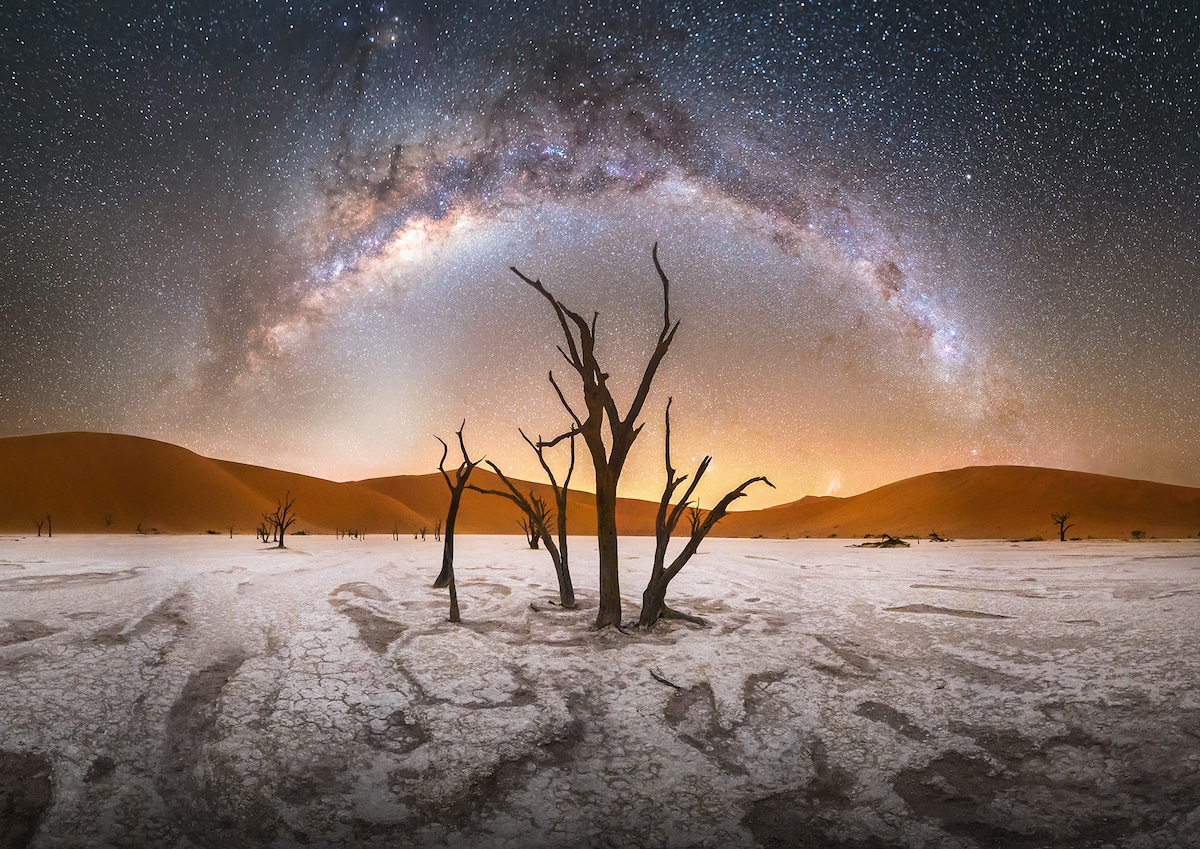
The trees in Deadvlei have been dead for over 500 years. Located in Namib-Naukluft Park in Namibia, these saplings grew after local rivers flooded because of severe rainfalls, but died after the sand dunes shifted to section off the river.
High above and far in the distance, the band of our Milky Way galaxy forms an arch over a large stalk in this night panorama image.
Travel and photography blog Capture the Atlas is known for its spectacular imagery and it particularly loves to share how amazing the cosmos are through breathtaking Milky Way photos. In fact, the site even published a calendar charting the best days and times to photograph the Milky Way to make it easier for photographers to take more stunning photos of our galaxy. Now, editor Dan Zafra has sifted through an incredible amount of photos to find the 25 best Milky Way photographers of the year.
This list has become an annual tradition at Capture the Atlas, with Zafra not only featuring well-known astrophotographers, but also spotlighting new talent. This year’s list features photographers from 14 different countries, as well as images of the Milky Way in remote locations like Antarctica.
The photographs also highlight the adventurous spirit of these travelers and photographers. Whether its climbers scaling a glacier in the Dolomites under the glow of the Milky Way or a solitary traveler standing alone in the Sahara, each photographer has a special story to tell. In fact, these stories prove that what we’re looking at is more than a simple photograph, it’s a special memory that can’t be replicated.
If anything, these pictures will certainly be an inspiration to get out in the open and try to get your own glimpse of the Milky Way. Coincidentally, June is the perfect time to view the Milky Way, as its Galactic Core is most visible for the longest amount of hours during this month.
Check out some of the best Milky Way photos of 2020.
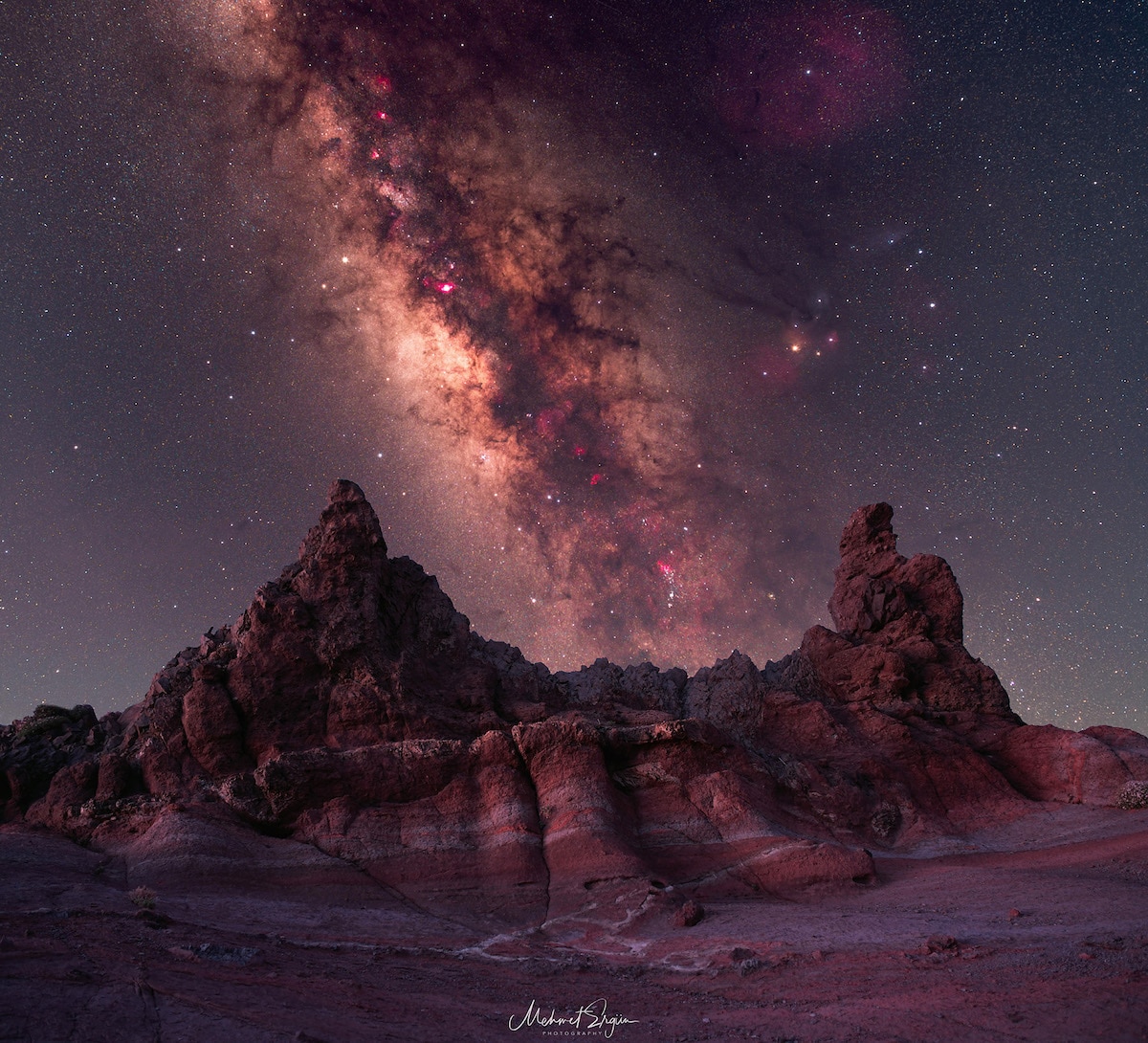
“Milky Way over Parque Nacional del Teide” by Mehmet Ergün. Tenerife, Spain.
This photo was taken on one of my favorite islands: Tenerife. This is an island with unlimited possibilities, where you can enjoy nature in all its glory. In particular, the night sky over Tenerife is renowned worldwide for its excellent conditions for stargazing and astrophotography.
“Alien Eggs” by Debbie Heyer. Badlands of New Mexico, USA.
The Badlands of New Mexico are otherworldly and mysterious. They resemble an alien planet. If you don’t believe in aliens, you will after seeing this place. This is not an easy terrain to navigate, and it is very easy to get lost. Luckily, my friends knew the area well, and we could enjoy this photographer’s paradise of endless compositions that blew my mind! This was shot last October on a two-week photo tour with friends through the Southwest. It was the best way to end the Milky Way season.
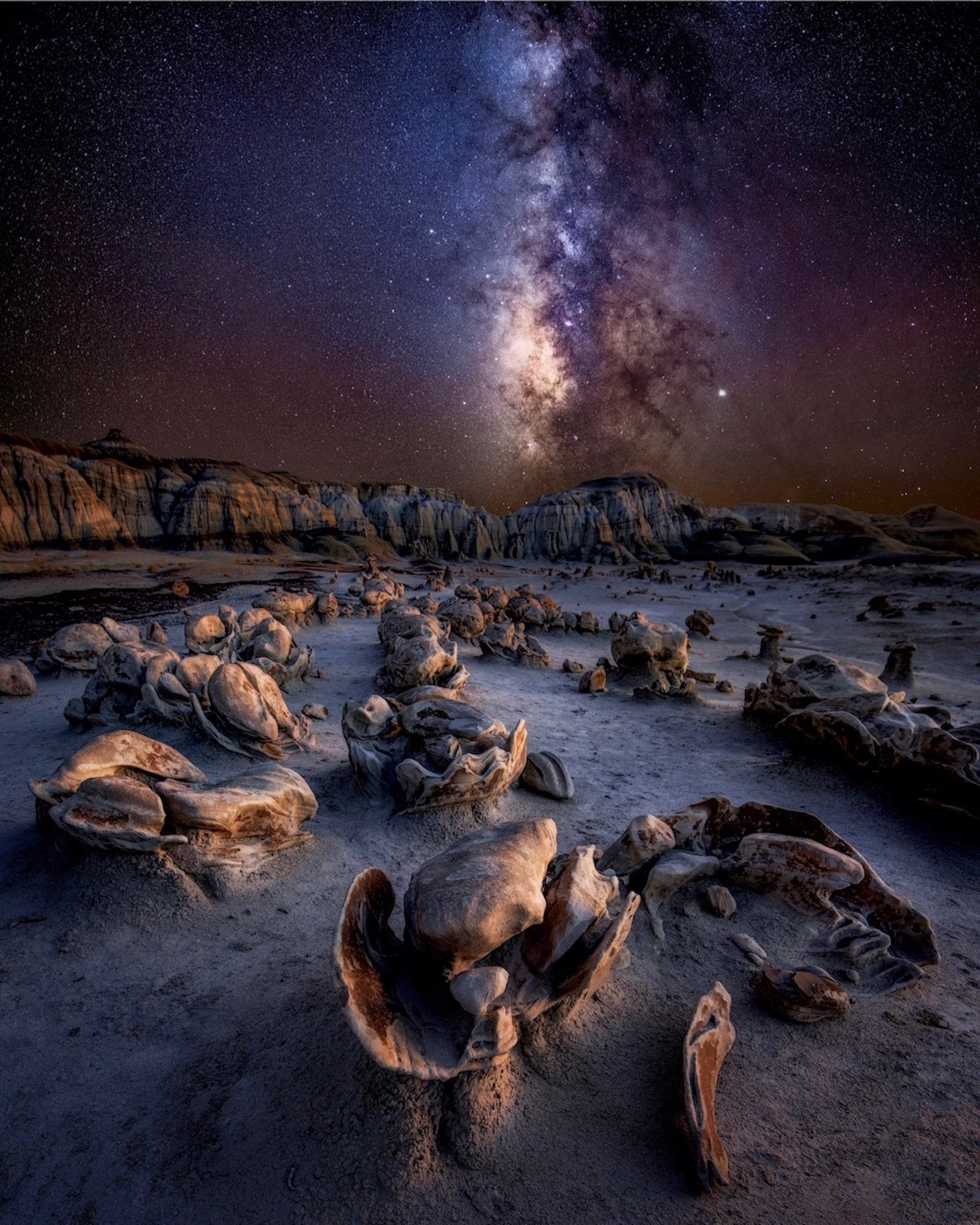
“Winter Milky Way” by Dr. Nicholas Roemmelt. Marmolada, Dolomites, Italy.
Although the Milky Way during the winter and early spring is often ignored in Astro-landscape photography, I really love the bright stars (some of the brightest of the night sky), colorful constellations, and fainter elements of this part of our galaxy when the galactic core is beneath the horizon.
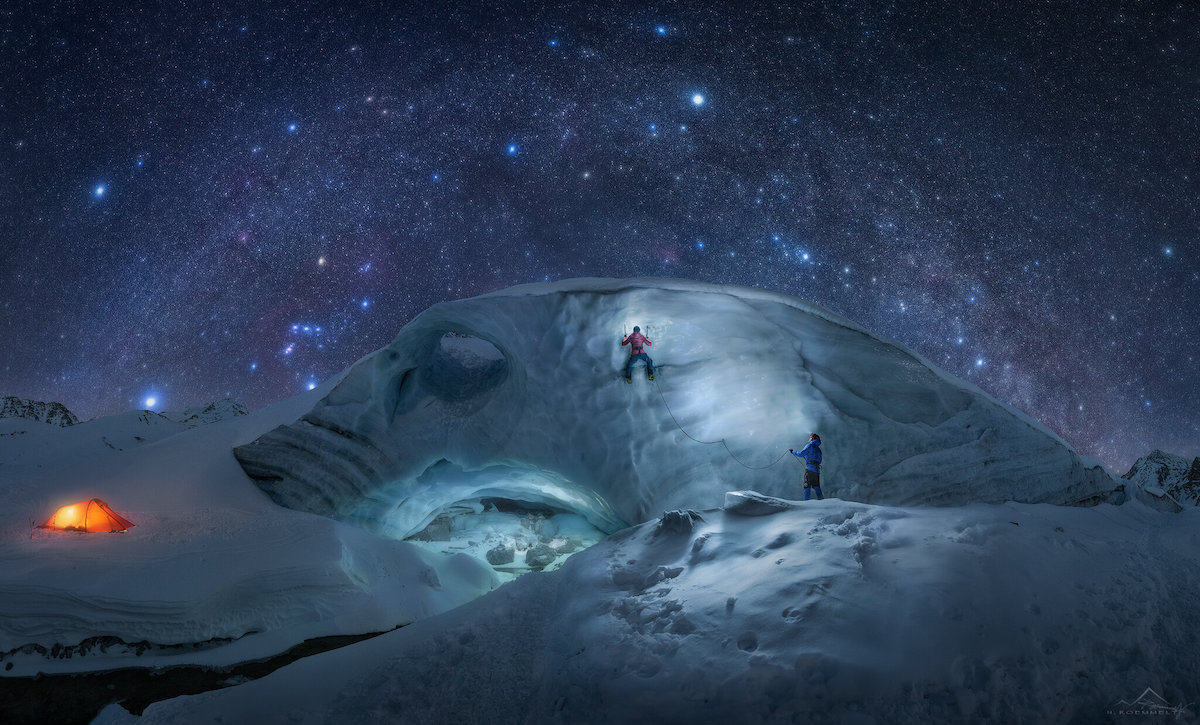
“Nightmare” by Michael Goh. Dumbleyung Lake, Australia.
Dumbleyung Lake is a salt lake located in western Australia. The lake is surrounded by hundreds of trees that have died due to the salt levels, and, on a calm night, all the stars reflect off the water. For this image, the dead trees gave me the idea of capturing them clawing up at the sky—the fish-eye panorama turned out better than expected, as the trees almost looked like tentacles. The location is very dark, so with no moonlight available, I used my self-portrait style with the figure holding the light (now a bit clichéd) to create more depth in the image as a solitary figure standing amongst the dead trees.
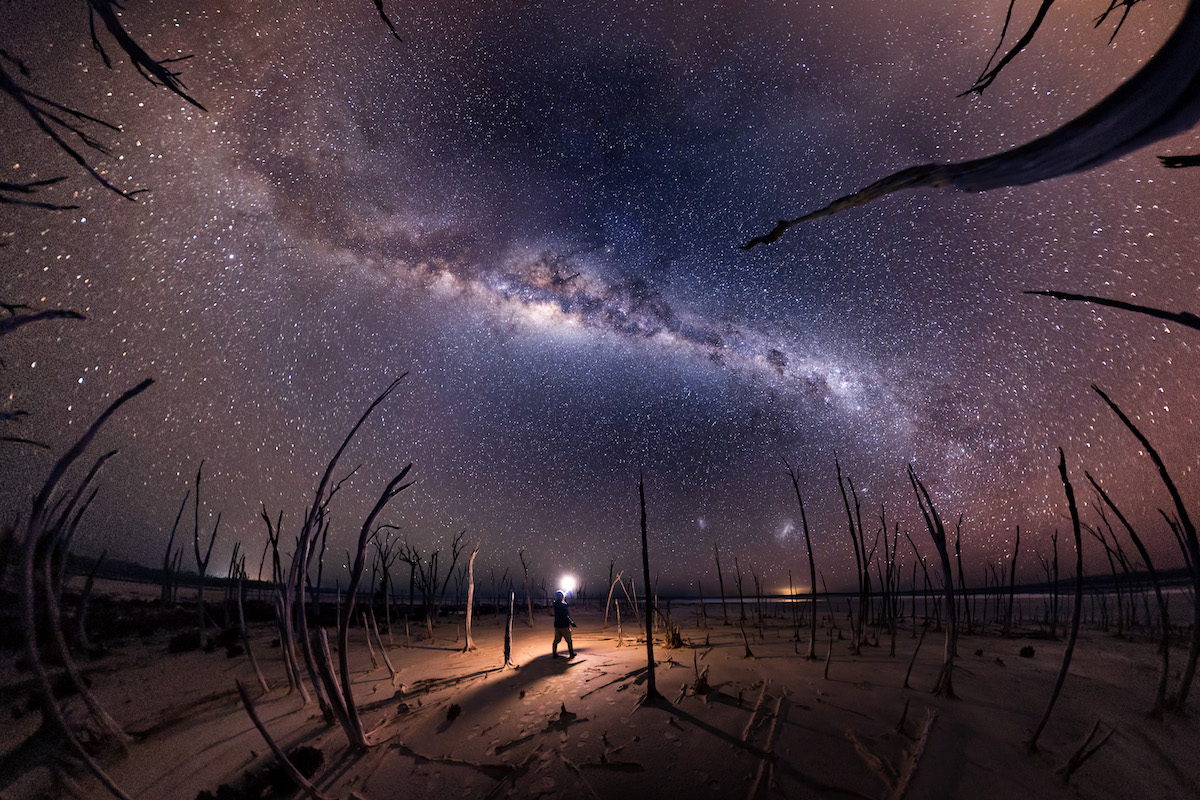
“Gran Firmamento” by Jorgelina Alvarez. Marambio Base, Antarctica.
This was a very special night full of emotions that I tried to capture in this photograph. Planets like Venus, Jupiter, Saturn, and Mars, always attract my attention. The galactic center was about to hide, among thousands of other stars in composition with the snowy Antarctic landscape.
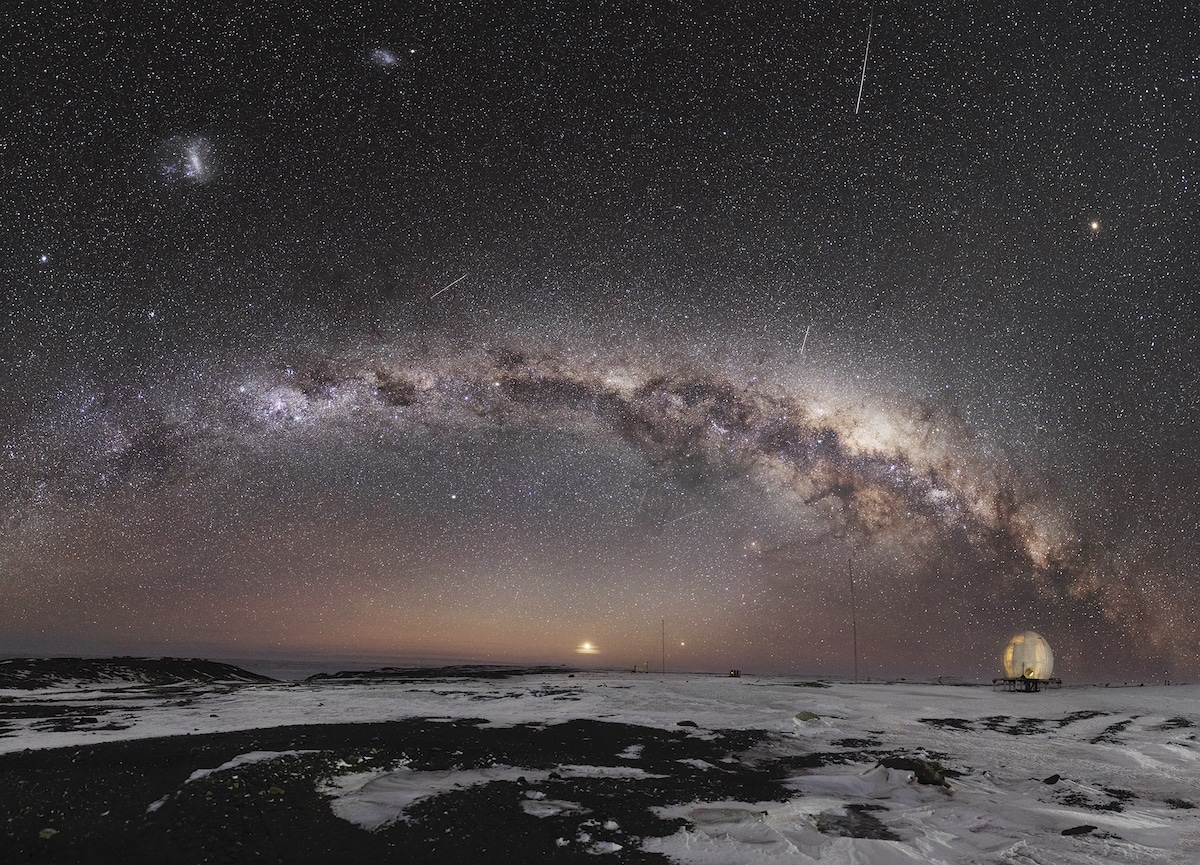
“Desert Nights” by Peter Zelinka. Alabama Hills, California, USA.
When I’m traveling through California, I always make sure to stop by the Alabama Hills. This is one of the most iconic locations in the western USA, with its incredible snow-capped Sierra Mountains, unique rock formations, and dusty roads.
In June, I spent a few nights camping in the desert beneath the stars. Once the Milky Way was shining brightly overhead, I wandered through the brush and found this unique arch.
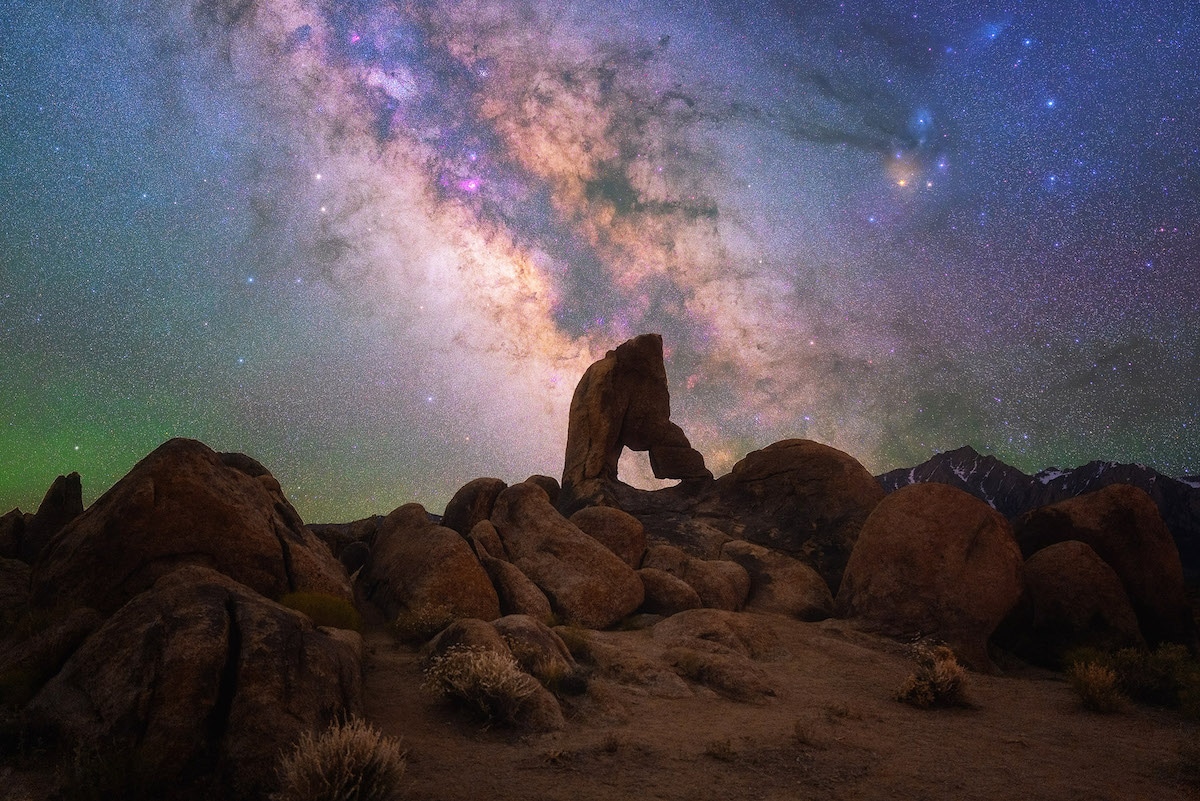
“Alone & Together in the Stardust” by Marco Carotenuto. The Sahara desert.
Describing this place in words or pictures is not easy because there are many emotions you can feel spending a night in the heart of the desert. Staying in the middle of nowhere, hundreds of miles away from civilization and with no electricity, cellular network, or water certainly puts you to the test. Shooting with your group, you can feel the emotion of sharing moments of humanity, even with those who you don’t know, being present, and forgetting about the daily routine.
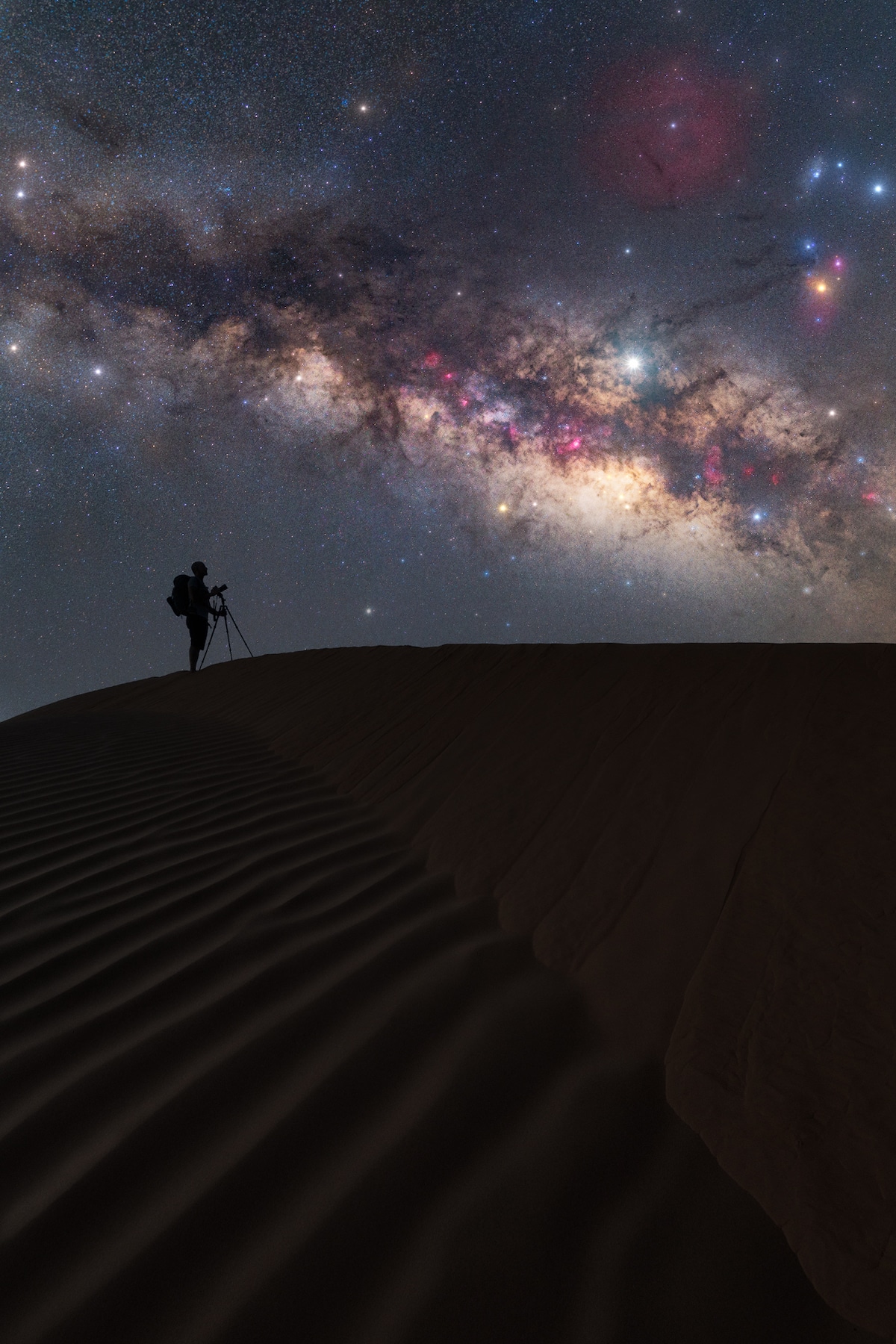
“Heavenly Throne” by Ryan Smith. Southwest USA.
I took this picture with the Canon EOS Ra; a mirrorless astrophotography camera that has a built-in infrared-cutting filter (positioned immediately in front of the CMOS imaging sensor), which permits approximately 4x as much transmission of hydrogen-alpha rays vs. standard digital cameras. This allows to capture more details of the night sky and the Milky Way, and really makes a difference in astrophotography.
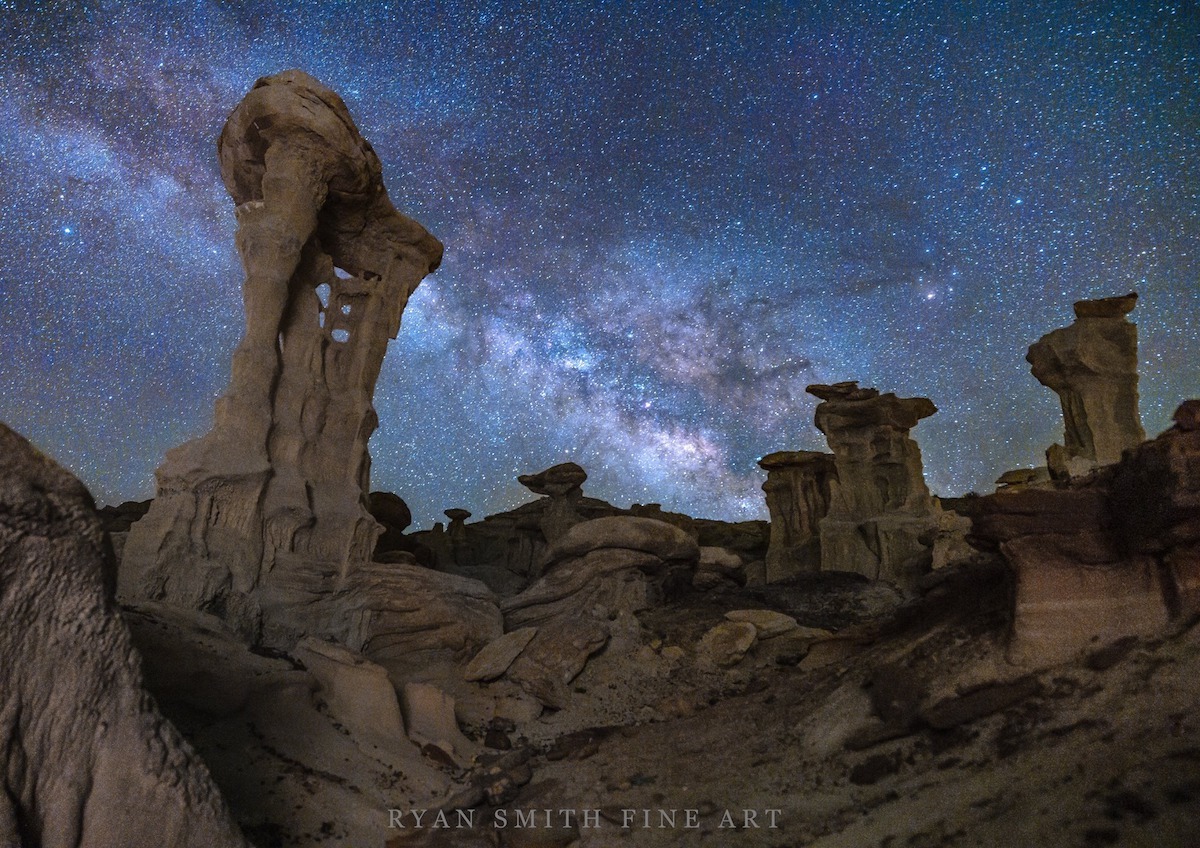
“Double Arch” by Pablo Ruiz García. Picos de Europa, Spain.
This spectacular arch-shaped rock formation is located in “La Hermida” gorge, in the Picos de Europa mountain range in Spain.
At first, my initial idea was to capture the galactic center inside the arch, but finally, I decided to shoot the two arches overlapped at this time of the year (late spring) when the Milky Way is still not too high in the sky.
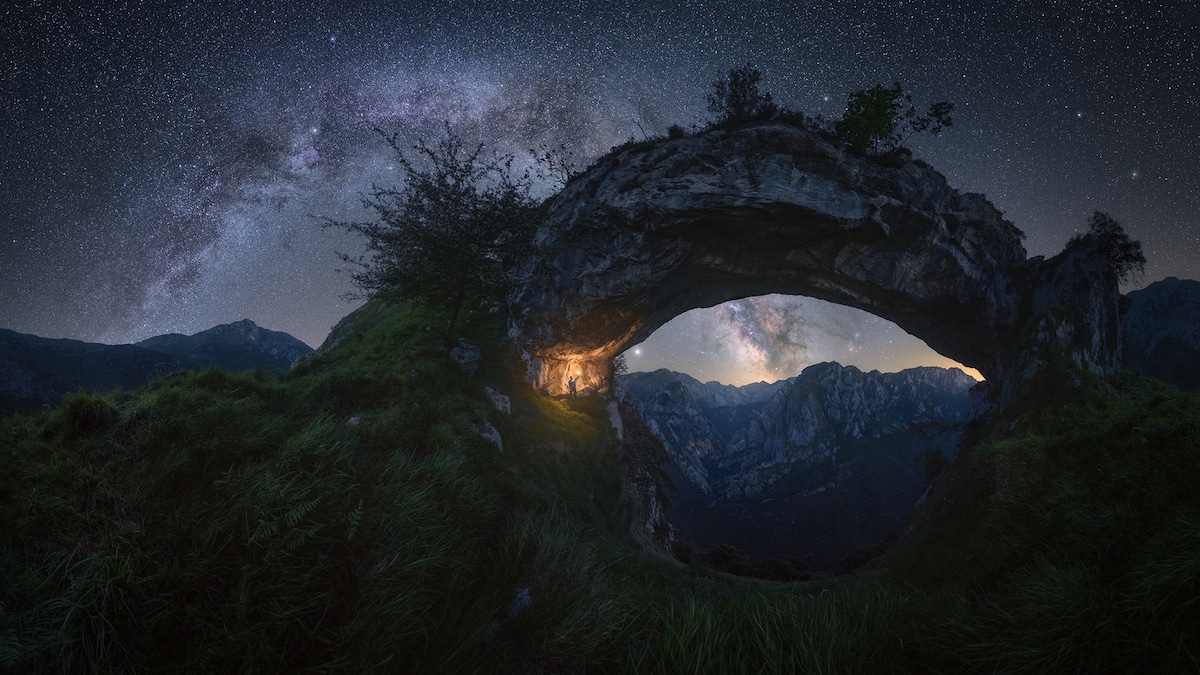
“Elemental” by Miles Morgan. Kilauea Volcano, Hawaii, USA.
During my trip to Hawaii, we were typically up around 2:30 am, and playing all day and well past sunset out on the lava flows. On this particular evening, after shooting the sunset, we checked Stargazer and saw that around 3-4 am, many of the planetary elements would be aligning around the plume at the Halema’uma’u crater.
Even though the skies were covered during most of the night, we happened to be at the right time to capture the lava and the Milky Way
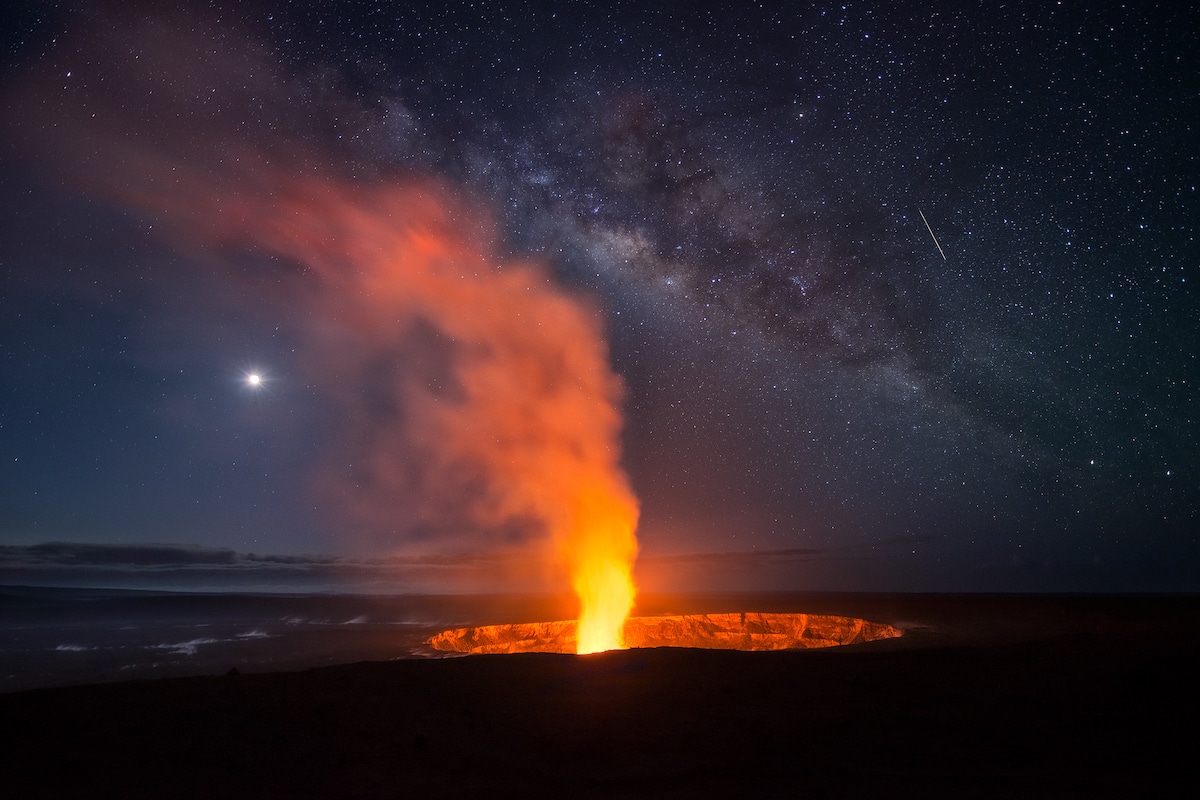
“A Night at the Caves” by Sam Sciluna. Ta Marija Cave, Malta, Italy.
I wanted to capture the core of the Milky Way over the entrance to ‘Ta Marija’ cave for years. I tried it several times previously, but I was unable to capture an image I was happy with. Last July, I headed back with a friend of mine to try to get a better shot, and finally make this dream a reality.
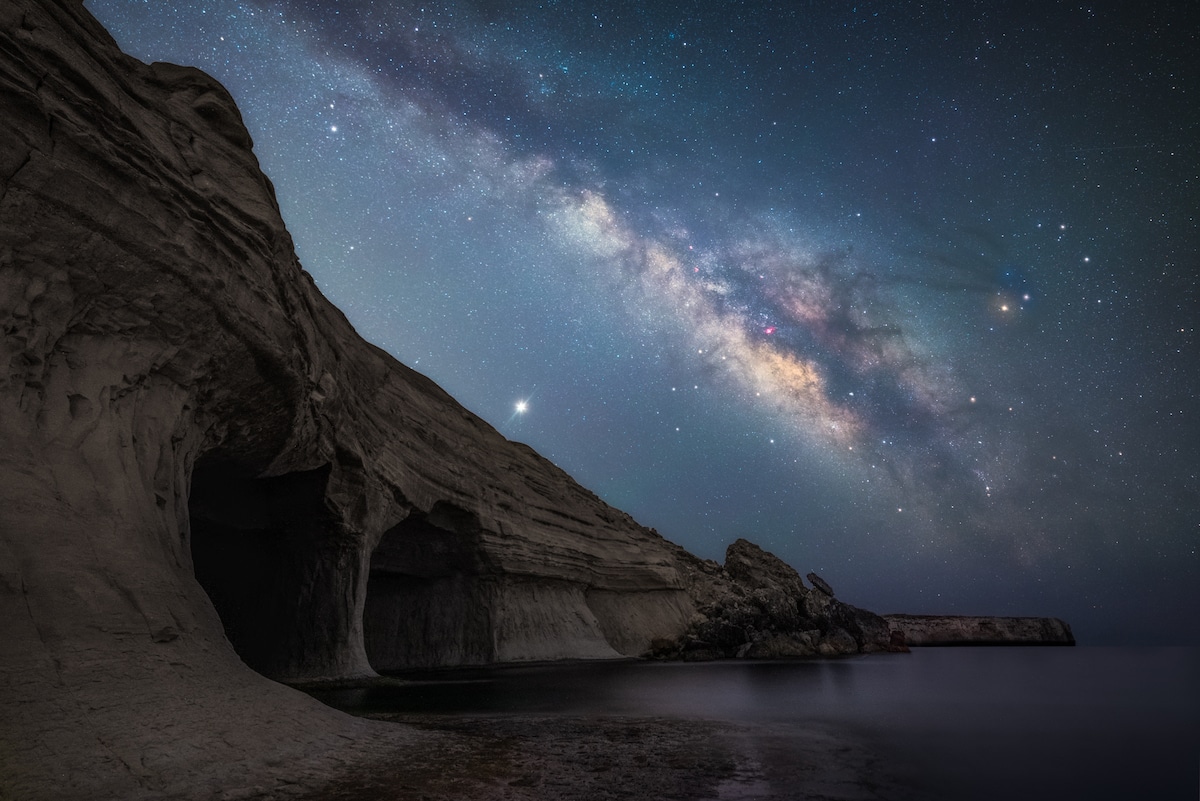
“Good Night Utah” by Julio Castro. Kanab, Utah, USA.
After visiting this location in 2017, it became my personal obsession to take a photo there, mainly because I couldn’t take any night shots since the place was very remote.
In May, I decided to go back and try to take the photo I had in mind. After a very cloudy night, just before dawn, the sky opened up, and a spectacular starry sky gave me the opportunity to take this picture with the arch of the Milky Way above the “wave” of rock that seems to surround the two hills, creating an almost perfect circle and allowing me to get the photo I had dreamed of.
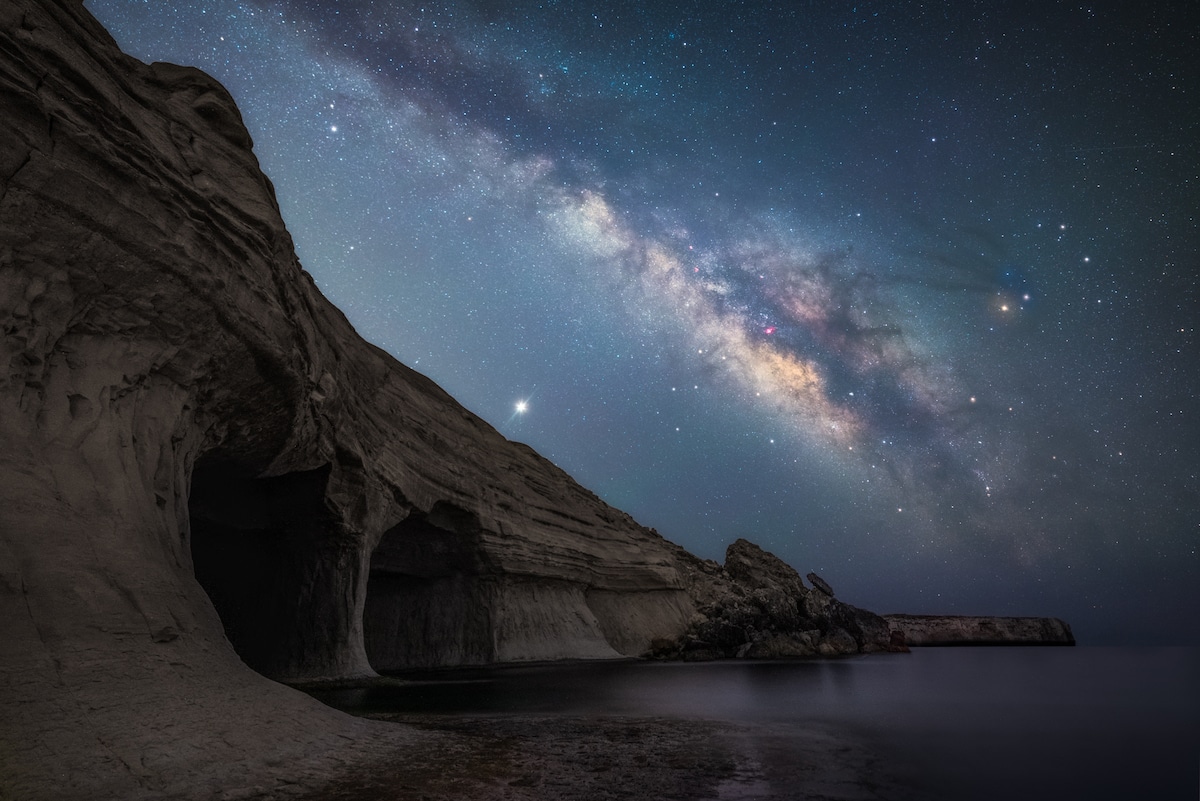

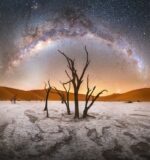

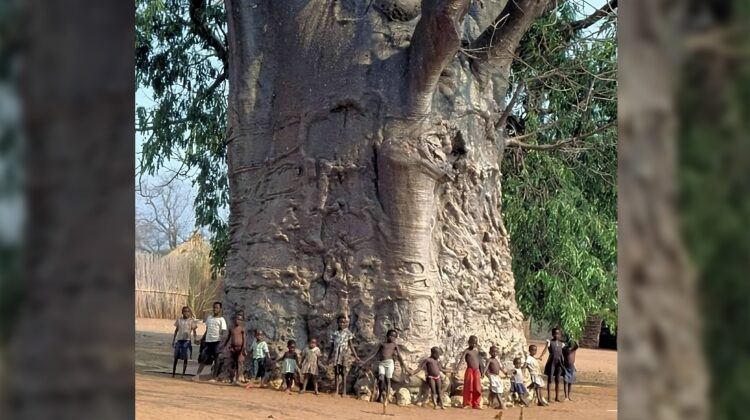


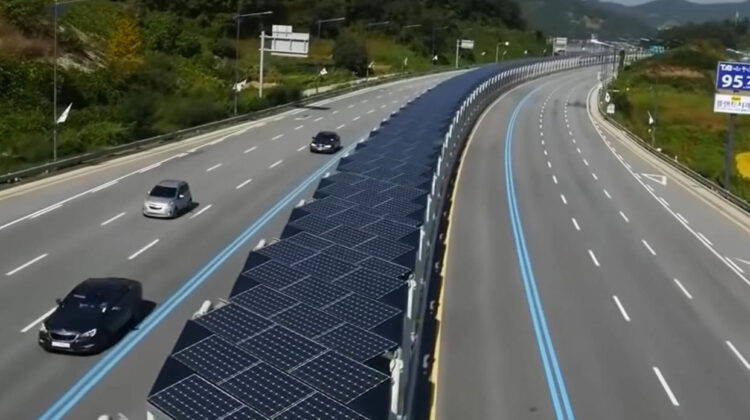

 Photographer Finds Locations Of 1960s Postcards To See How They Look Today, And The Difference Is Unbelievable
Photographer Finds Locations Of 1960s Postcards To See How They Look Today, And The Difference Is Unbelievable  Hij zet 3 IKEA kastjes tegen elkaar aan en maakt dit voor zijn vrouw…Wat een gaaf resultaat!!
Hij zet 3 IKEA kastjes tegen elkaar aan en maakt dit voor zijn vrouw…Wat een gaaf resultaat!!  Scientists Discover 512-Year-Old Shark, Which Would Be The Oldest Living Vertebrate On The Planet
Scientists Discover 512-Year-Old Shark, Which Would Be The Oldest Living Vertebrate On The Planet  Hus til salg er kun 22 kvadratmeter – men vent til du ser det indvendigt
Hus til salg er kun 22 kvadratmeter – men vent til du ser det indvendigt  Superknepet – så blir snuskiga ugnsformen som ny igen!
Superknepet – så blir snuskiga ugnsformen som ny igen!  Meteorite That Recently Fell in Somalia Turns Out to Contain Two Minerals Never Before Seen on Earth
Meteorite That Recently Fell in Somalia Turns Out to Contain Two Minerals Never Before Seen on Earth  Nearly Frozen Waves Captured On Camera By Nantucket Photographer
Nearly Frozen Waves Captured On Camera By Nantucket Photographer  It’s Official: Astronomers Have Discovered another Earth
It’s Official: Astronomers Have Discovered another Earth 